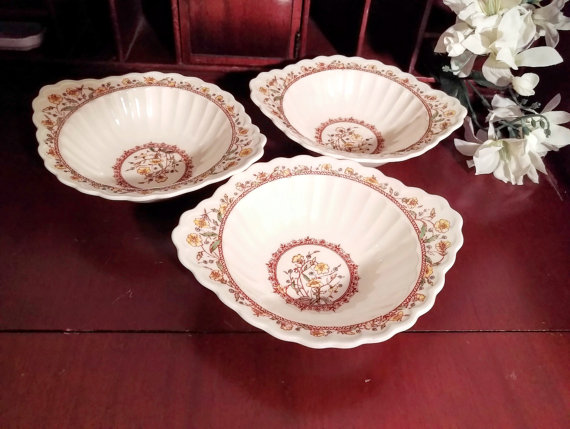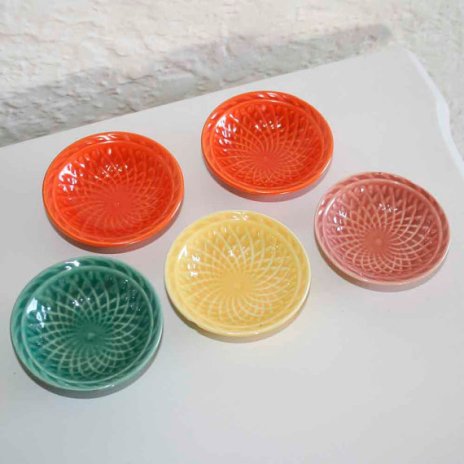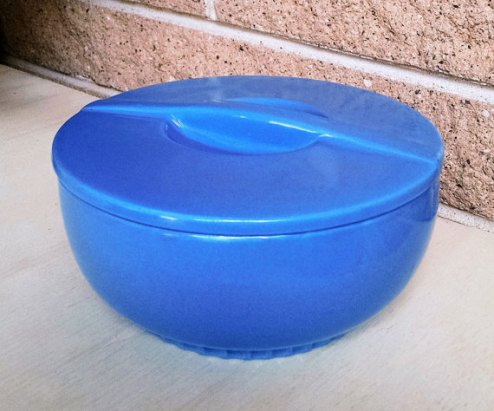Now this is an interesting history! I love these bowls I picked up for the shop a few months ago. Aren’t they pretty?! I love the design.

Well, these particular bowls are from a company I had never heard of before I found these. They are by a pottery known as Vernon Kilns, out of Vernon, California. I say the history is interesting because I’m going to back it up to a period just before Vernon Kilns came into existence.

According to “Collectible Vernon Kilns” by Maxine Feek Nelson, the beginning of the story starts with 2 brothers, Robert and James Furlong. They lived in Ireland and set out to find their fortune in the California Gold Rush in about 1848.

The weird thing is that they set out separately and somehow they managed to find each other in San Francisco a few years later. They actually found gold, unlike some unlucky souls who searched for years and found nothing. They decided to settle in Bakersfield, California, as ranchers and sent for their wives in Ireland.

When Robert’s wife, Martha, arrived, they decided to move to Southern California and bought a ranch in Vernon, a town with a population of a few hundred people. It was a pretty good sized ranch where they raised their 4 children, Tom, James, Annie and Judith.

Tom and James became leaders of their community and well into the 20th century kept their hand in the government of Vernon. It was Judith where the Vernon Kilns piece of this gets going. As she grew up and became a teacher, a guy over in England with relatives in the pottery business set out for the States. His name was George J.W.(Wade) Poxon.

He worked his way through the states once he got here visiting many potteries along the way, especially those in Ohio. Until, lo and behold, he found himself in Vernon and decided to buy the ranch adjacent to the Furlong ranch. There he met, fell in love with and wooed Judith into marriage.

As he settled down into married life, the china company he had started the year before, Poxon China, began taking off. They eventually had 65 people working at Poxon. They started making tile but switched to heavy hotel restaurant ware with the onset of WWI. So what does this have to do with Vernon Kilns? I’m almost there.

Sometime in July of 1931 Poxon China, which had had a good run, was sold to Faye G. Bennison. Vernon, by this time, had become part of Los Angeles, CA. Bennison continued to produce many of the successful lines of the Poxon China Company until an earthquake in 1933 destroyed the molds. This meant they had to develop their own shapes.

In the late 1940s they almost closed due to fires but they kept going. They actually did quite well until, in a story we’ve seen many times, a flood of foreign imports sank the company. Vernon Kilns sold out to Metlox in 1958. Metlox continued to use the Vernon Kilns shapes under the Vernonware line until 1989.

The Vernon Kilns products were made from clay from Tennessee, Kentucky, North Carolina and England (Oocities.org). Many of their patterns were hand-painted.

So that is the story of Vernon Kilns. It started as one thing and ended as another. It didn’t have a long run, only 27 years. But since Vernon Kilns used Poxon molds and Metlox used Vernon Kilns molds, it can be difficult to tell from the shape which manufacturer you have when you are trying to date something.

Am I the only person who found it amazing that 2 brothers managed to find each other in the Old West during the gold rush?! If it wasn’t for them settling in California and one of them moving to Vernon, this might have had a very different ending.
Join me at the link parties on the right this week! Do you have any Poxon or Vernon Kilns china? Tell me about it. I’d love to hear your story! Have a great week!






























